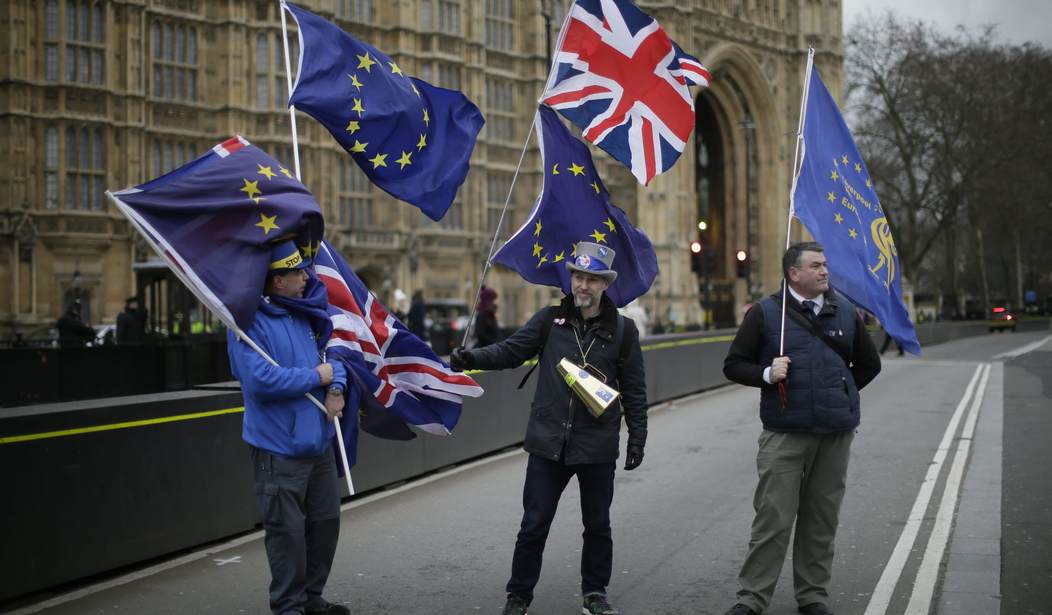Is the EU trying to pull a “fast one” on its citizens? Maybe so.
Some recent efforts aimed at saving Europe’s banks from another financial crisis may be a Trojan horse aimed at abolishing the nation states of the European Union.
Of course, the EU isn’t portraying its efforts that way. Instead, eurocrats (a.k.a. European bureaucrats) are disguising their work as an effort to save the public from a repeat of the 2008-09 taxpayer-funded banking bailouts.
The problem is that the solution presented isn’t necessary to prevent either financial crises or to avoid a raid on the state coffers. However, the remedy offered is perfect if you want to turn the EU into the United States of Europe, according to a leading economist.
Here’s what you need to know to understand the subterfuge.
On the face of it, the ruse of avoiding a banking crisis sounds reasonable because at least the southern countries of the EU are anything but short of dodgy banks.
“The assumptions from economists and central banks is that if we don’t avoid the failure of banks, then we face systemic risk,” says Ivo Pezzuto, professor of global economics, entrepreneurship and disruptive innovation at the Paris-based International School of Management. In other words, we must do something, or we face financial Armageddon.
That’s why Europe’s bean counters have been hard at work trying to figure out a solution. So, last month the European Systemic Risk Board published a report on the feasibility of creating a new financial instrument backed by a mishmash of bonds issued by the member states of the Eurozone, the single currency area inside the EU. These so-called Sovereign Bond-Backed Securities (SBBS) would be held by banks and other financial institutions to help shore up their balance sheets.
“Such an asset could help to facilitate the diversification and de-risking of banks’ sovereign bond portfolios,” the report states. “Diversification would reduce the exposures of banks to domestic sovereign risk.” That’s because the securities that the banks own, such as government bonds, play a major role in determining the institution’s solvency.
Put another way: a Rome-based bank wouldn’t be hampered by needing to own Italian government bonds if Italy’s finances took a further dive. Instead, the bank could own the SBBS assets, which are a mishmash of government bonds from the Eurozone countries. This risk spreading would “mitigate the system-wide contagion that might otherwise result,” the report says.
The problems with the SBBS solution are multifaceted. But the most basic issue to understand is that the regulators are like evangelical pastors in that they want to save every dodgy bank.
“I think there is probably the view in Europe that bank failures may cause systemic risk even when they won’t,” says Pezzuto. “What we have seen is even small regional Italian banks were treated like they posed systemic risk.”
The next big issue with the SBBS solution is that it isn’t necessary.
“It is just a rhetorical device to panic the public,” says Steve Hanke, professor of applied economics at Johns Hopkins University. “It’s a fraud on the public because they are scaring the hell out of the public that there is a banking failure around the corner.”
By that, he means that the talk of avoiding a repeat of the Great Recession is designed to get the public to fall in line with a banking plan. It’s a plan he doesn’t see as necessary.
“You should do away with bank bailouts and instead you should have bail-ins,” he says. What his idea means is that when a bank collapses the shareholders lose everything they invested and then the depositors take a hit on their savings. The logic behind having savers take a haircut is to encourage people to pick solid banks versus dodgy ones.
Hanke also says the EU might want to try adopting a tactic that once got used in the U.S.: “Double liability.” When a bank failed not only would the shareholders lose everything, but the bankruptcy court could go after some other assets of the bank’s owners as well, he explains.
“If you were really interested in protecting taxpayers from bank bailouts, that’s what you’d do,” he says.
So, if the SBBS isn’t about avoiding bailouts, what’s the deal?
The apparent longer-term goal is in creating a political union of the EU, or a United States of Europe rather than the fractious multi-country affair that the bloc is now.
“That is the scenario and everything going on in Europe is to centralize power, and make the EU more powerful,” Hanke says.
So how does that work? The efforts to create a security that all banks can use instead of debt from their own countries is a step toward what would be known as a “banking union.” That means that the banks across the EU are all connected as part of one system.
Hand-in-glove with the banking union comes a so-called fiscal union where every country’s finances are intertwined. “The banking union is linked together with the fiscal union,” Hanke says. That’s because, even with the SBBS, the solvency of each country affects the banking system.
The final stage, which more or less requires the other two stages, is the political union that would make the EU a single political entity: a U.S.E., United States of Europe.









Join the conversation as a VIP Member